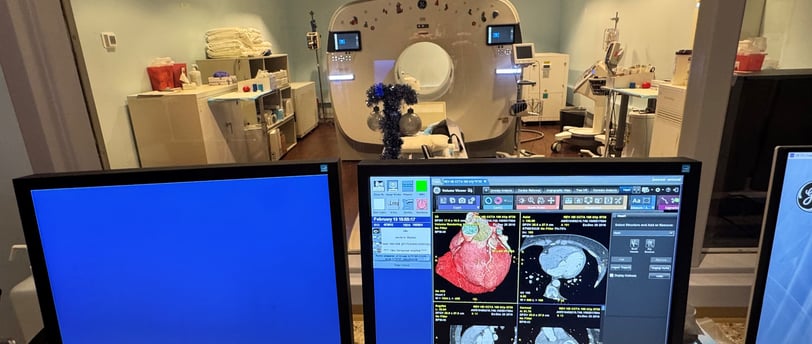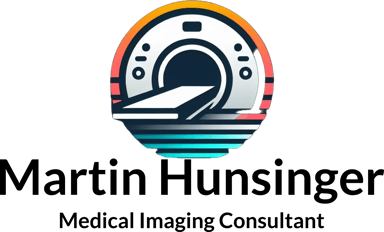The Shift Toward AI-Driven, Outpatient Cardiac CTA
Cardiac computed tomography angiography (CTA) has long been constrained by motion artifacts, a challenge that has traditionally been managed within hospital settings under radiology oversight. However, a paradigm shift is emerging—one that leverages AI-driven automation and empowers outpatient cardiology to take the lead in motion management. This transformation is not just theoretical; it’s happening now.scription.
HEALTHCARE


Florida Cardiology: A Case Study in Excellence
Recently, I had the opportunity to assist Florida Cardiology with their cardiac CTA program. What I witnessed was a masterclass in motion management—every study produced was not only diagnostic but also accepted by HeartView without issue. This was accomplished using the GE CTPET Omni, a powerful scanner already delivering outstanding results.
However, what’s even more exciting is that with an upgrade to Snapshot Freeze, Florida Cardiology could incorporate AI-driven motion management, further reducing artifacts and enhancing diagnostic confidence. The potential here is groundbreaking: AI is making it possible to standardize and simplify motion management, ensuring that cardiac CTA can be performed consistently in outpatient settings, not just within hospitals.
Why Cardiologists Are the Best at Motion Management
There’s a fundamental flaw in how motion management is approached in many imaging environments: too much reliance on radiologists. The truth is, cardiologists—who are already comfortable administering both oral and IV beta blockers—are far better suited to handle heart rate control for cardiac CTA. They understand their patients’ conditions better, can make rapid, real-time decisions, and ultimately ensure that heart rates are properly managed before the scan even begins.
At Florida Cardiology, this expertise was evident. Their ability to precisely time beta-blocker administration, optimize patient preparation, and work seamlessly with technologists resulted in consistently clean studies. This level of precision is replicable, and it should be the standard across the industry.
AI as the Equalizer: Removing Variability in Cardiac CTA
One of the biggest challenges in cardiac CTA has always been variability—differences in technique, patient compliance, and operator experience. AI changes the game by providing consistent, automated adjustments that take the burden off technologists and eliminate human inconsistency.
GE leads the industry in AI-driven motion management, as confirmed by a HeartView representative I spoke with. Their AI-based tools are designed to do the heavy lifting, meaning:
Less dependency on manual adjustments by technologists
More standardized, reproducible results across different facilities
Lower repeat scan rates, improving efficiency and reducing patient radiation exposure
This means that high-quality coronary CTA can now be performed outside of hospitals, making advanced imaging more accessible and efficient.
The Call to Action: A New Standard for Cardiac CTA
The industry must recognize that cardiologists should take the lead in motion management, supported by AI-driven protocols that technologists can easily implement. The future of cardiac CTA is not just hospital-based imaging—it’s technologist-friendly AI tools enabling outpatient facilities to deliver the same, if not better, diagnostic quality.
Here’s what needs to happen:
Outpatient cardiology centers must invest in AI-driven motion management tools like Snapshot Freeze to ensure consistency and accuracy.
Cardiologists should take ownership of beta-blockade protocols, rather than leaving it to radiologists.
Referring providers should direct patients to outpatient centers that utilize AI-assisted coronary CTA, ensuring lower costs, faster scans, and equal or better diagnostic quality.
GE and other manufacturers must continue pushing for simplified, automated motion correction to remove human variability from the equation.
This is not the future—it’s happening now. Outpatient facilities like Florida Cardiology are proving that when motion management is done right, hospital dependence is unnecessary. It’s time for the industry to embrace this shift and drive adoption across the board.
